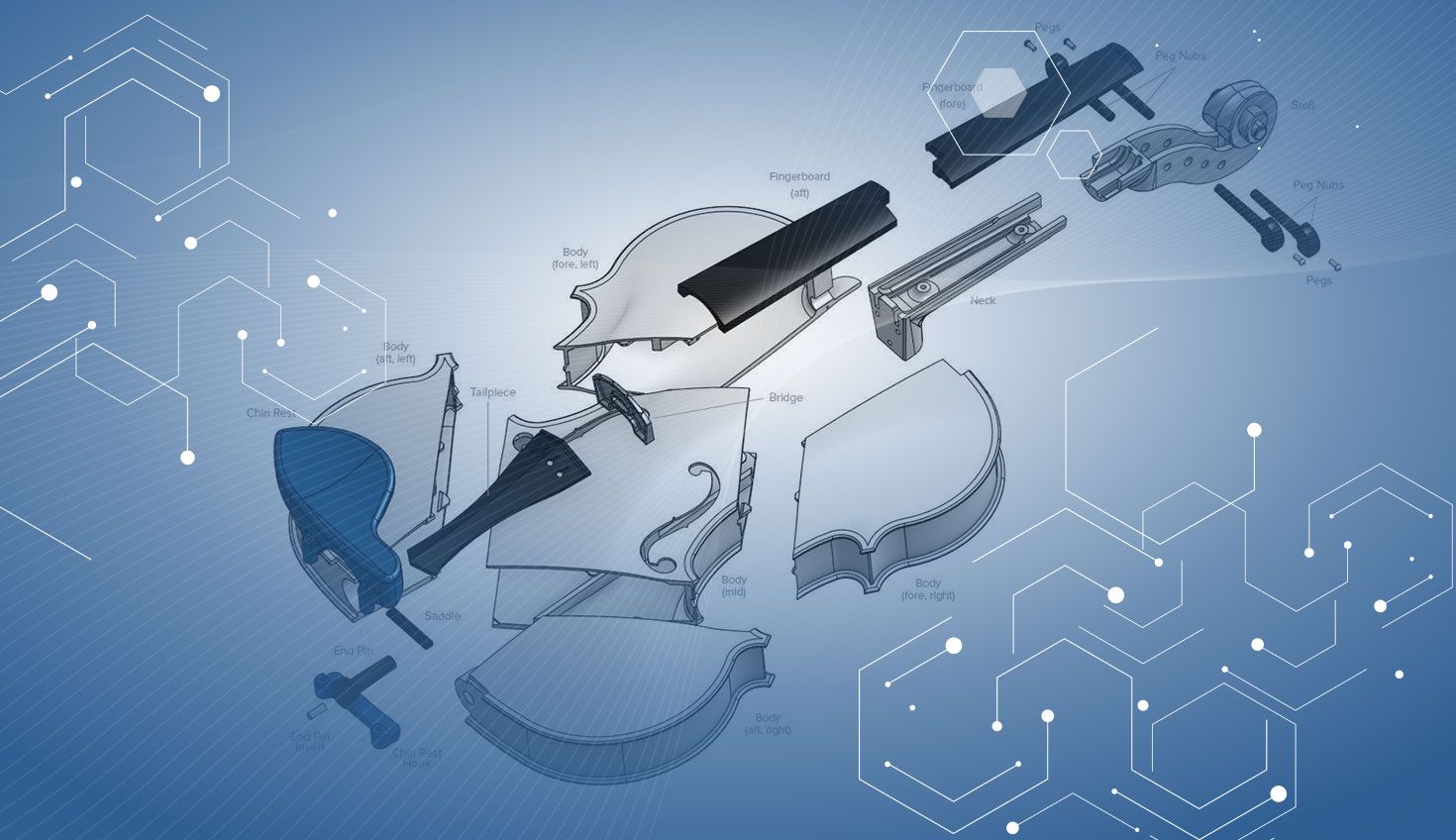
6:60
The violin's form is very recognizable. It’s been around for centuries, and has barely changed in design. Violin music has evolved to such a high level that the instrument has attained an almost legendary status in our culture.
The difficulty of designing an acoustic instrument is that it needs to sound authentic, without the help of amps, filters, and other things you can use for an electric instrument. For a violin, the entire body of the instrument contributes to the sound, so the geometry, internal structure, and material properties all come into play.
A few years ago, I built a traditional wooden, hand-carved violin based on tracings of a Guarnerius in a book from 1884, Violin Making, As It Was and Is by Edward Heron Allen. This year, I tried to do the same with modern design tools and 3D printing.
My company, Formlabs, partnered with violinist Rhett Price to debut the 3D-printed violin in a new video, featuring an original song composed by Rhett and recorded on the 3D-printed violin.
Traditional Violin Anatomy
The violin has evolved into an organic shape that is closely tied to its function. The neck supports the four strings, which stretch over a bridge pressing onto the hollow body. In the middle of the body, there is a waist to allow full motion of the bow.
The front face of the violin is traditionally made from spruce, which is flexible and lightweight so that it can vibrate responsively. Some of the force of the strings (and some of the lower frequency vibration) is transmitted to the maple back of the instrument via the sound post – a spruce rod that is friction-fit in between the front and back plates. Along the inside of the front face is the bass bar, a strip of wood that reinforces the front and helps transmit the vibrations to the whole surface.
Cross-section of a violin showing the bass bar section (A) and sound post (B). From Edward Heron Allen’s 1884 book, “Violin Making, As It Was and Is.”
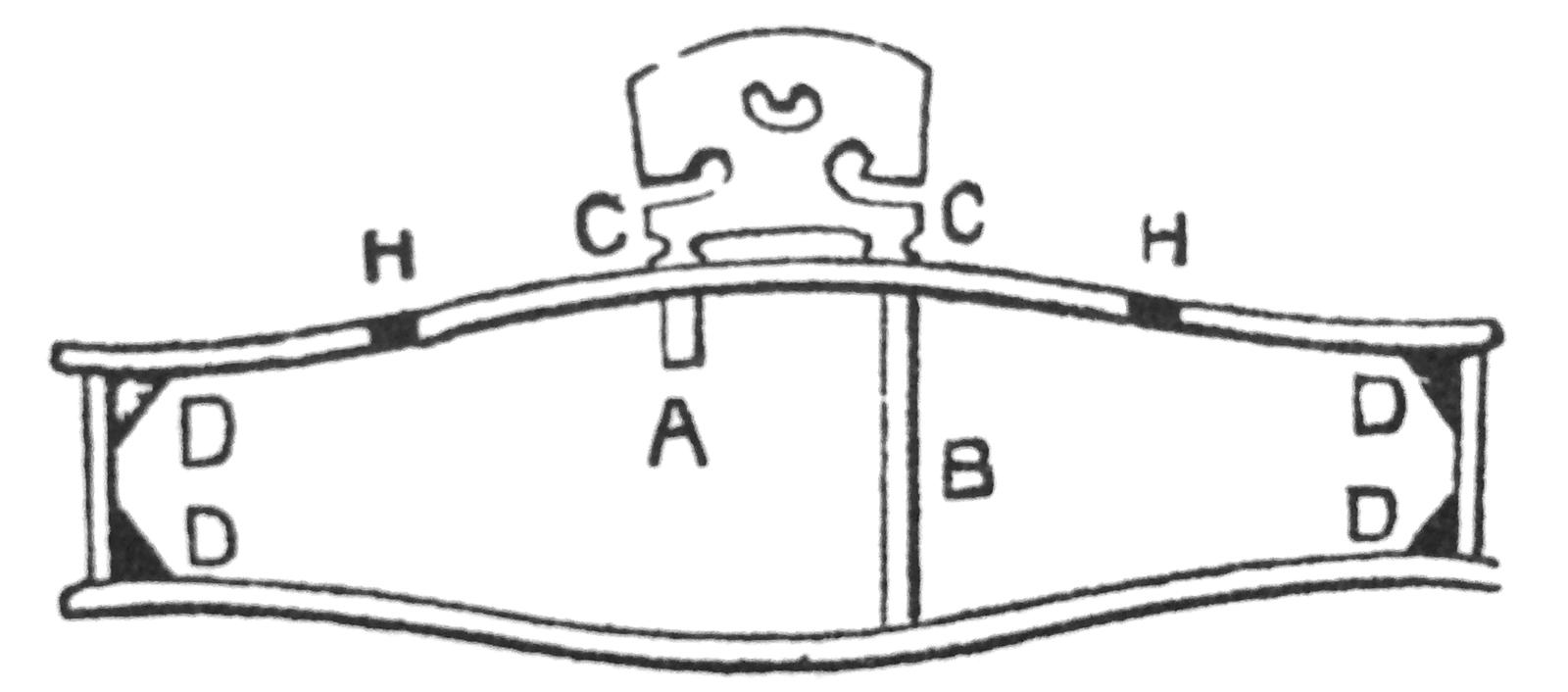
I wanted to design a 3D-printed violin to have the same internal structure: a hollow shell with the soundpost near one side of the bridge, and a strengthening bar of material along the inside of the front. Later, I would experiment with the dimensions of these various elements, but it was important to get the basics right.
Modeling a Violin in Onshape
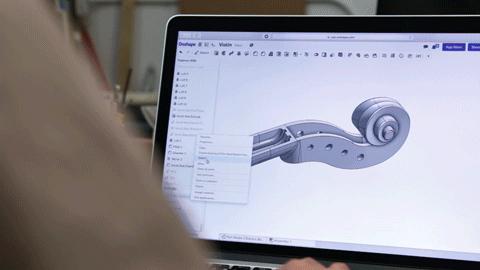
A violin is hard to draw on paper and even harder to draw on a computer. The most notable features of a violin’s geometry are the front and back plates and the scroll.
What helped me figure out how to model the front and back faces was a doodle I sketched a few years ago (redrawn here with more detail) of how to define the body of a violin. Originally I had been planning to model the violin in Rhino 3D, which creates surfaces with a UV parameterization. Later, I decided that parametric control of the dimensions would be important, so I chose Onshape, but continued to think of the outer surfaces with U and V directions in mind.

Because these surfaces are based on a grid, they can have up to four natural singularities, which would correspond to the four corners of a rectangular grid. Luckily, the violin body has four corners, while the rest of the boundaries are smooth. In Onshape, I was able to define this shape as a loft, with corners of the cross-sections located at the corners of the violin. To constrain the loft to the right shape, I used the C-shaped outlines and the centerline contour as guides. These cross-sections and guides are based on actual outlines of a Stradivarius violin, which can be found in the same book I used to construct the traditional Guarnerius violin.
A loft of the front of the violin in Onshape, showing cross-sections (outlined in orange) and guide curves.
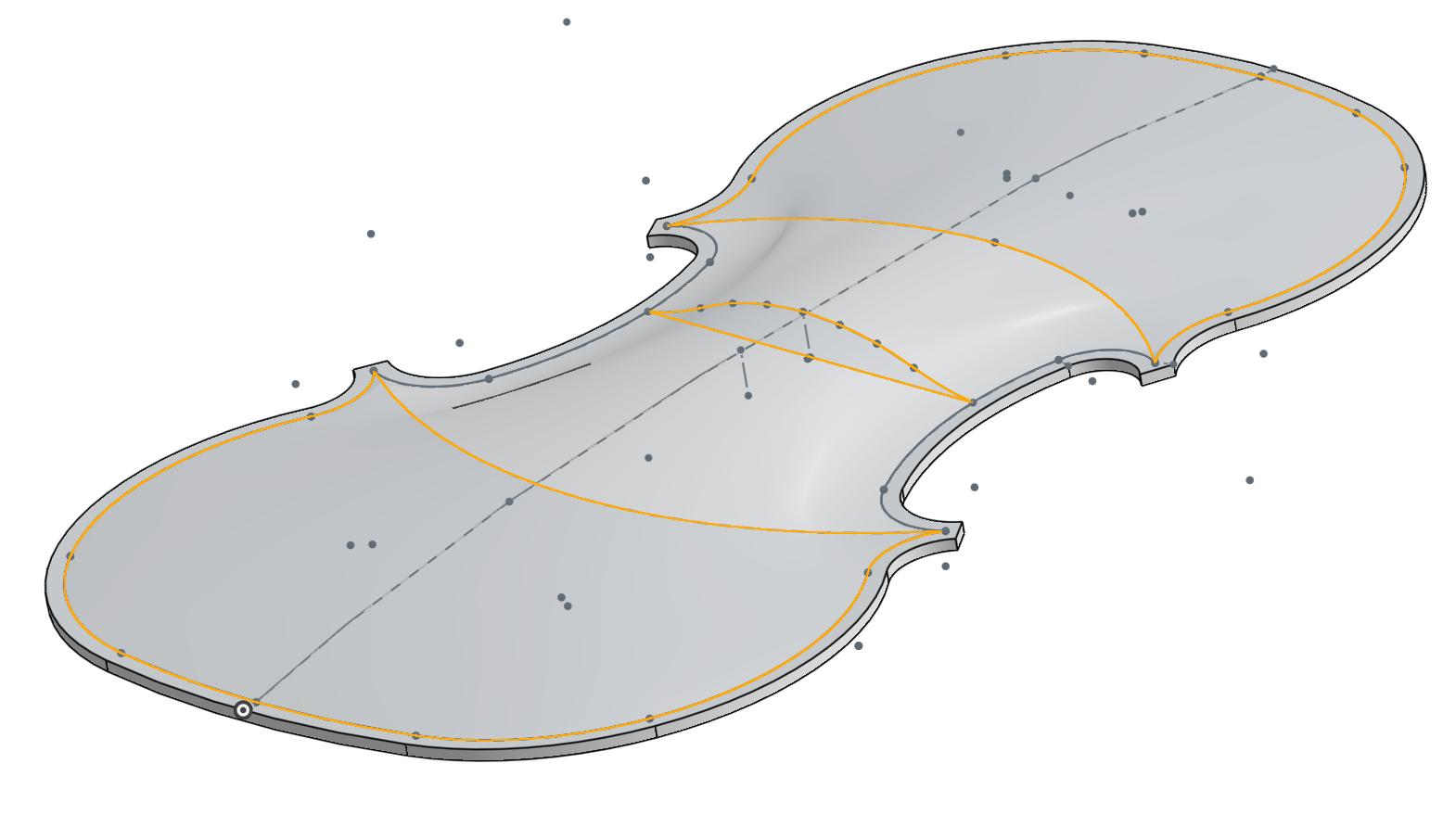
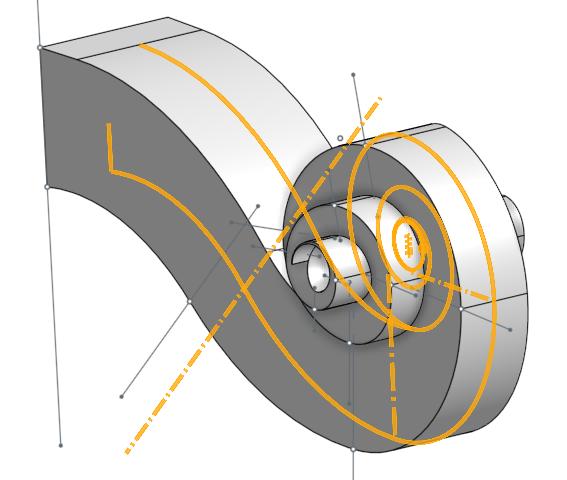
Basic loft of the violin scroll in Onshape, with a side view (in orange) and surface lines (in black) showing the local orientation of the spiraling side faces. The side view and all the surface lines are individual sketch features that can be modified to change the overall shape of the scroll.
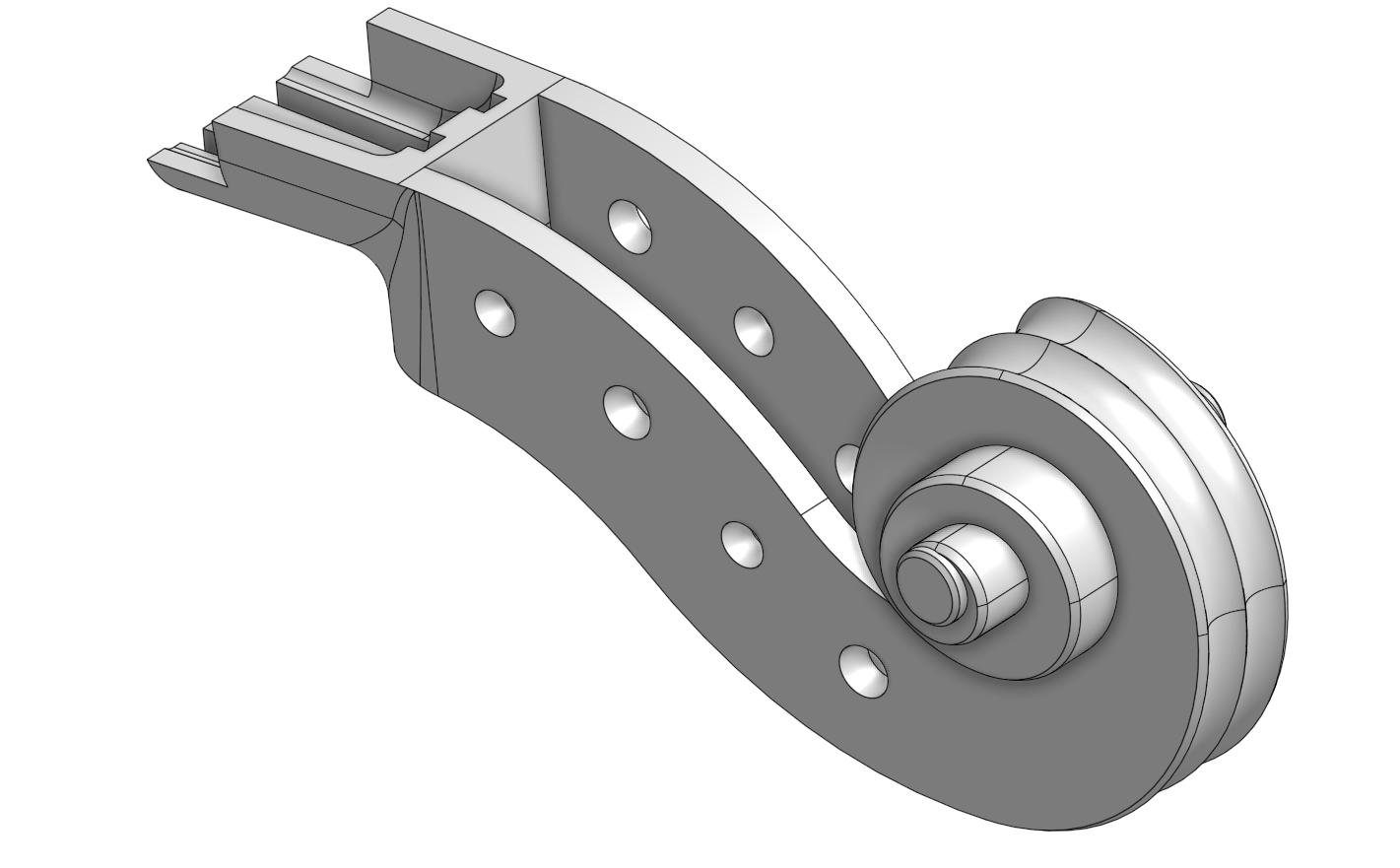
Finished design of the scroll, with traditional features (peg box, peg holes, chamfer, and fluting) and modern features (locating geometry for connecting to the neck and carbon fiber).
The scroll is another iconic piece of the violin that I was able to define using a well-placed loft. The cross-sections were connected by a 3D spiral-like guide that went along the edge of the scroll; I later added chamfered edges and used a lofted cut to make the fluted surfaces on the outside of the scroll.
With a few exceptions, the first few hundred features in the Onshape feature list generally define a traditional violin, and the last few hundred features take that geometry and adapt it to 3D printing. I added modifications such as combining parts that traditionally would be separate, splitting large parts into printable pieces, and locating features (like tabs and dowel holes) for ease of assembly.
The parametric format of the 3D model was useful in many ways. By suppressing the later, “modern” features of the model, one can see (and potentially use) the basic model of a violin to make a CNC-cut, but traditionally constructed violin. Another option would be to modify the split positions to accommodate printers of other sizes. A more ambitious project would be to edit the dimensions of earlier sketches to change the model into that of a viola, which has a similar shape and slightly larger dimensions. Along the same trend, one can envision modifying this existing violin model into a cello, at which point the concern becomes figuring out how to construct such a sizable instrument.
Rapid Prototyping with a Form 2 3D Printer
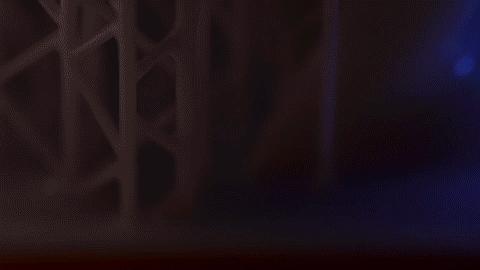
I originally wanted to create one prototype, simply to prove that it worked. Indeed, the first one worked for a while, but as we tested the prototypes, it became clear that numerous improvements would be necessary. By the time we shot the video with Rhett, I had built five different 3D-printed violins.
I printed the prototypes using the Form 2 and Formlabs’ White, Black, and Tough Resins. Stereolithography (SLA) made sense for this project because the violin needed to be strong enough to withstand several different directional forces, and SLA parts are isotropic, meaning that they are equally strong in every direction. Also, the complex geometry of the instrument demanded tight tolerances for both small and large features, which the Form 2 was able to print consistently.
Exploded view of the violin, showing all 26 3D-printed parts. (Strings and other off-the-shelf hardware omitted).
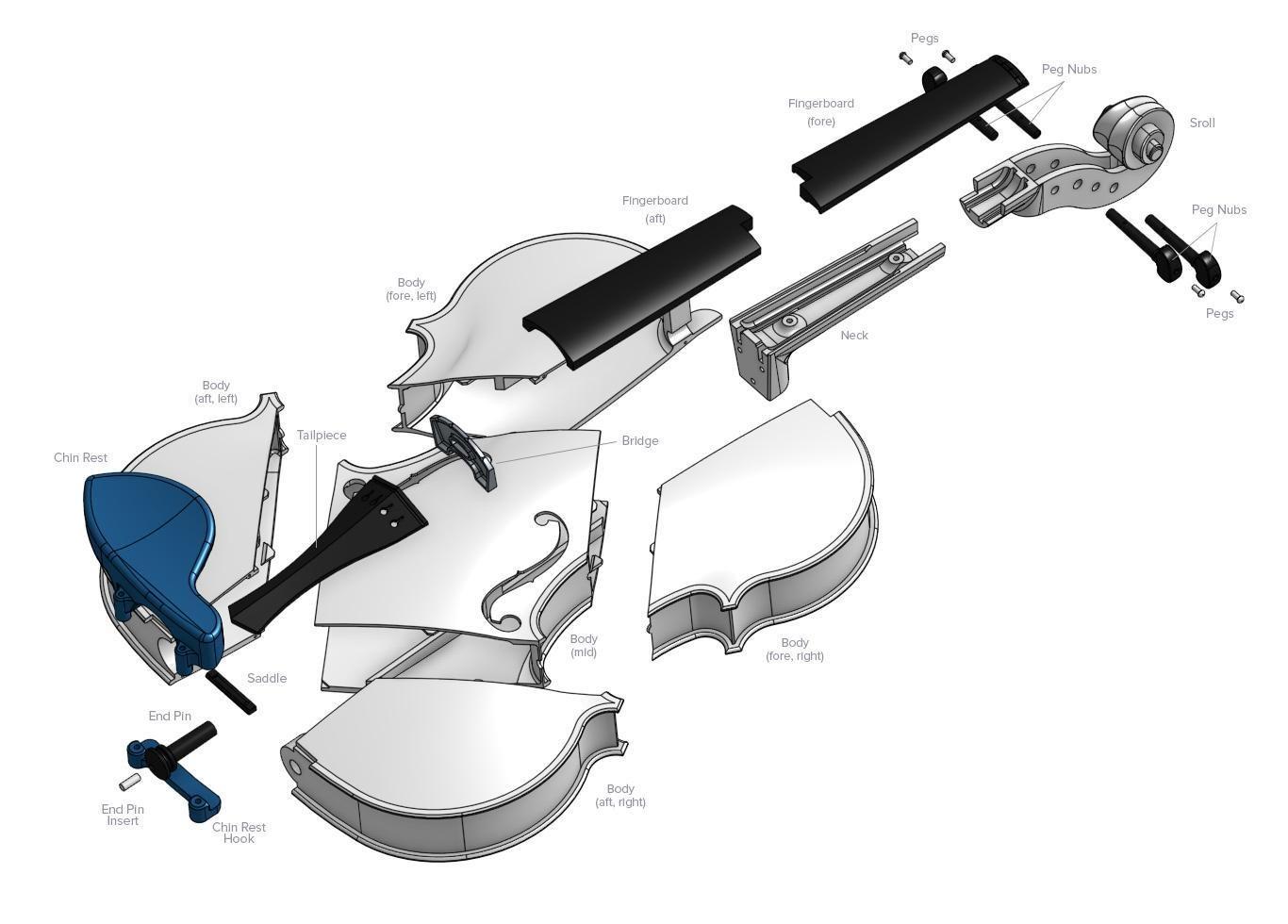
This third and final (for now!) version of the violin consists of 26 3D-printed parts that can be printed in just five overnight prints on a Form 2. All of the additional hardware, like strings, screws, and carbon fiber rods are easily obtained (more information on Pinshape).
And all these iterations added up to one happy violinist.
“Once the design was finalized and I brought the violin home to write and record the track, I was extremely surprised by the sound,” Rhett said. “This entire project has completely challenged my perspective on what can be successfully created with a 3D printer, and it's exciting and inspiring to see things like this in my lifetime, and to be involved in the process of creating it!”
Violinist Rhett Price plays Formlabs engineer Brian Chan’s 3D-printed violin. Visit Rhett’s Facebook page to hear more of his music.

Create Your Own 3D-Printed Violin
The 3D-printed, parametrically designed violin is a huge step towards the goal of creating a high-quality synthetic instrument. It opens up the possibility of research into the numerous variables of geometry and material selection and how they affect the sound, and also allows us to create instruments at a fraction of the cost and effort that it would take to make a traditional instrument.
I hope that other tinkerers will take up this design and add their own changes as they see fit. To try it out, download the violin file from Pinshape, or head to Onshape to make a copy that you can edit and experiment with.
To experience SLA quality firsthand, request a free sample part printed on the Form 2.

Latest Content

- Case Study
- Consumer Products
BOA Technology: Redefining Outdoor Fit Equipment with Cloud-Native Onshape
11.03.2025 learn more
- Blog
- Becoming an Expert
- Assemblies
- Simulation
Mastering Kinematics: A Deeper Dive into Onshape Assemblies, Mates, and Simulation
12.11.2025 learn more
- Blog
- Evaluating Onshape
- Learning Center
AI in CAD: How Onshape Makes Intelligence Part of Your Daily Workflow
12.10.2025 learn more
- Blog
- Evaluating Onshape
- Assemblies
- Drawings
- Features
- Parts
- Sketches
- Branching & Merging
- Release Management
- Documents
- Collaboration
Onshape Explained: 17 Features That Define Cloud-Native CAD
12.05.2025 learn more



